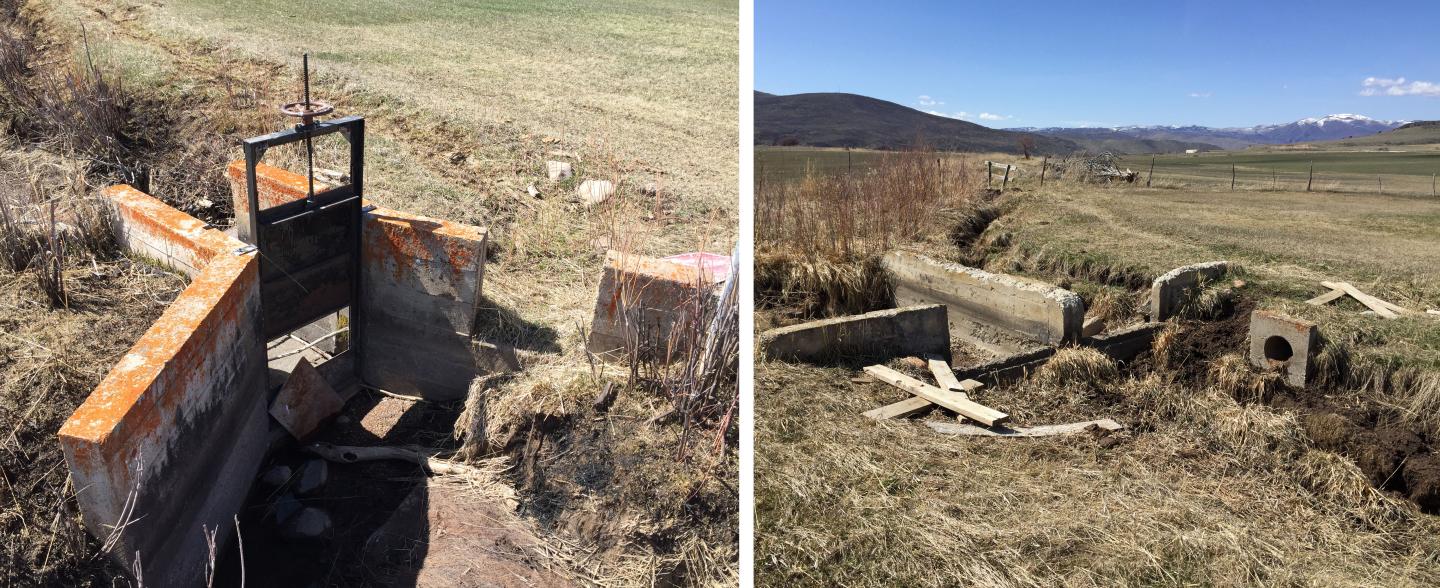WaterSMART Initiative Helps Northern Utah Farmers Increase Irrigation Efficiency and Conserve Water

The collaboration between NRCS and the Bureau of Reclamation is a priority of the National Drought Resilience Partnership. EQIP funding from NRCS helps producers apply conservation practices to complement projects funded by the Bureau of Reclamation WaterSMART programs.
Getting water to his cow-calf operation in Summit County was a constant challenge for Stephen Kladis. With the open system bringing water from the Peoa South Bench Canal, “We were losing half of our water before it even got to our first turnout,” Kladis said.
In the two years since the canal was converted from an open ditch to a gravity pressurized pipe, Kladis and other agricultural producers are seeing the benefits from increased irrigation efficiency to lower maintenance costs and better production.

The project is one of five completed in Utah through the WaterSMART Initiative, a joint effort between the Bureau of Reclamation and the U.S. Department of Agriculture’s Natural Resources Conservation Service (NRCS). The initiative utilizes targeted funding from the Environmental Quality Incentives Program (EQIP) to conserve water and increase drought resilience. It also helps producers apply conservation practices to complement funding provided by the Bureau of Reclamation’s WaterSMART programs to the local irrigation district.
Four other priority areas in the state have focused on improving water efficiency from the West Cache Canal. Work has converted more than 15 miles of earthen canal to pressurized pipe, installed sprinkler systems to replace flood irrigation, and constructed a centralized pump station to improve water delivery from the Bear River.
“Since the start of this joint-coordination effort we’ve invested $4 million through EQIP-WSI in Cache, Morgan, and Summit Counties, assisting 64 producers across more than 4,700 contracted acres to reduce drought stress on crops, protect crop health, and conserve water,” said Emily Fife, NRCS state conservationist for Utah.
Utah is one of 16 states involved in the initiative with a total of 45 priority areas identified and $29.7 million available in EQIP funding for fiscal year 2024. One of these priority areas is in Cache County, Utah and has budgeted $700,000. This new project in the King Irrigation Company priority area will provide EQIP funding to install pressurized pipe, a telemetry system, and pump stations.
The collaboration between NRCS and the Bureau of Reclamation is a priority of the National Drought Resilience Partnership. EQIP funding from NRCS helps producers apply conservation practices to complement projects funded by the Bureau of Reclamation WaterSMART programs. Reclamation’s WaterSMART investments help states, tribes, and local entities plan for and implement projects that increase water supply by providing funds to modernize existing infrastructure and otherwise build drought resilience.
To learn more about NRCS programs, producers can contact their local USDA Service Center. Producers can also apply for NRCS programs, manage conservation plans and contracts, and view and print conservation maps by logging into their farmers.gov account. If you don’t have an account, sign up today.
USDA touches the lives of all Americans each day in so many positive ways. Under the Biden-Harris administration, USDA is transforming America’s food system with a greater focus on more resilient local and regional food production, fairer markets for all producers, ensuring access to safe, healthy and nutritious food in all communities, and building new markets and streams of income for farmers and producers. To learn more, visit usda.gov.
By Sarah Welliver, State Public Affairs Specialist, NRCS Utah



